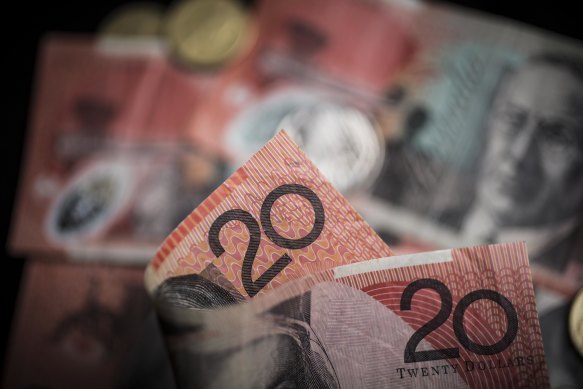This was published 5 months ago
Bigger pay packets could keep rates higher for longer, economists warn
By Millie Muroi
Treasurer Jim Chalmers has celebrated higher than expected wage growth as proof real wages are improving, but economists warn that pay rises may help keep inflation too high to persuade the Reserve Bank to lower interest rates.
Wages rose by 4.1 per cent over the year to June, the same result as in March and just above market expectations of 4 per cent.

Both the Reserve Bank and many economists were expecting annual wage growth for the June quarter to clock in at 4 per cent.Credit: Dominic Lorrimer
As the political debate focuses on the cost of living and the level of government spending in the economy, Chalmers welcomed the third consecutive quarter of real wage growth but stressed the government knew Australians were still struggling with high prices.
“When we came to office, real wages were falling by 3.4 per cent,” he said.
“Since our election, average annualised wage growth is double the rate we saw under our predecessors. This return to sustainable wages growth under a Labor government is welcome, but we know people are still under pressure.”
Annual wage growth clocked in 0.3 percentage points higher than the annual inflation rate of 3.8 per cent as public servants collected their highest pay increases for a June quarter in 12 years. Public sector wages contributed a quarter of overall wage growth in the June quarter – up from 19 per cent at the same time last year.
The day after Reserve Bank deputy governor Andrew Hauser dismissed predictions on the next interest rate move as the words of “false prophets”, economists warned bigger pay packets could keep inflation sticky and interest rates higher for longer.
KPMG chief economist Brendan Rynne said the strength in public sector wages reflected a surge in recruitment and $30 billion in wage increases for childcare, aged care and disability care workers.
This could feed into price pressures, especially in services sectors, according to EY senior economist Paula Gadsby.
Annual wage growth has remained at or above 4 per cent since last September and is close to its 15-year peak of 4.2 per cent.
Despite a weakening jobs market, Reserve Bank governor Michele Bullock last week ruled out a rate cut, warning that without productivity growth, it would be “very difficult to have growth in wages of around about 3.5 per cent without adding to inflation”.
In the three months to June, wages rose by 0.8 per cent. Private sector wages rose 0.7 per cent in the quarter – the equal lowest since the 2021 December quarter – bringing the annual rate down to 4.1 per cent.
Public sector wages rose 0.9 per cent in the quarter and 3.9 per cent over the year to June.
Australian Bureau of Statistics head of prices statistics Michelle Marquardt attributed the public sector rise in large part to the synchronisation of Commonwealth pay increases on March 14.
“Pay rises for these jobs had previously been paid at different times across quarters depending on the timing of individual agency agreements,” she said.
By industry, annual wage increases were highest in healthcare and social assistance at 5 per cent, followed by education and training – areas largely tied to government services.
CBA economist Stephen Wu said the latest data showed wage growth had peaked late last year and was easing as the labour market cooled.
“Looking ahead, the annual rate of wage growth should ease sharply,” he said.
Cut through the noise of federal politics with news, views and expert analysis. Subscribers can sign up to our weekly Inside Politics newsletter.